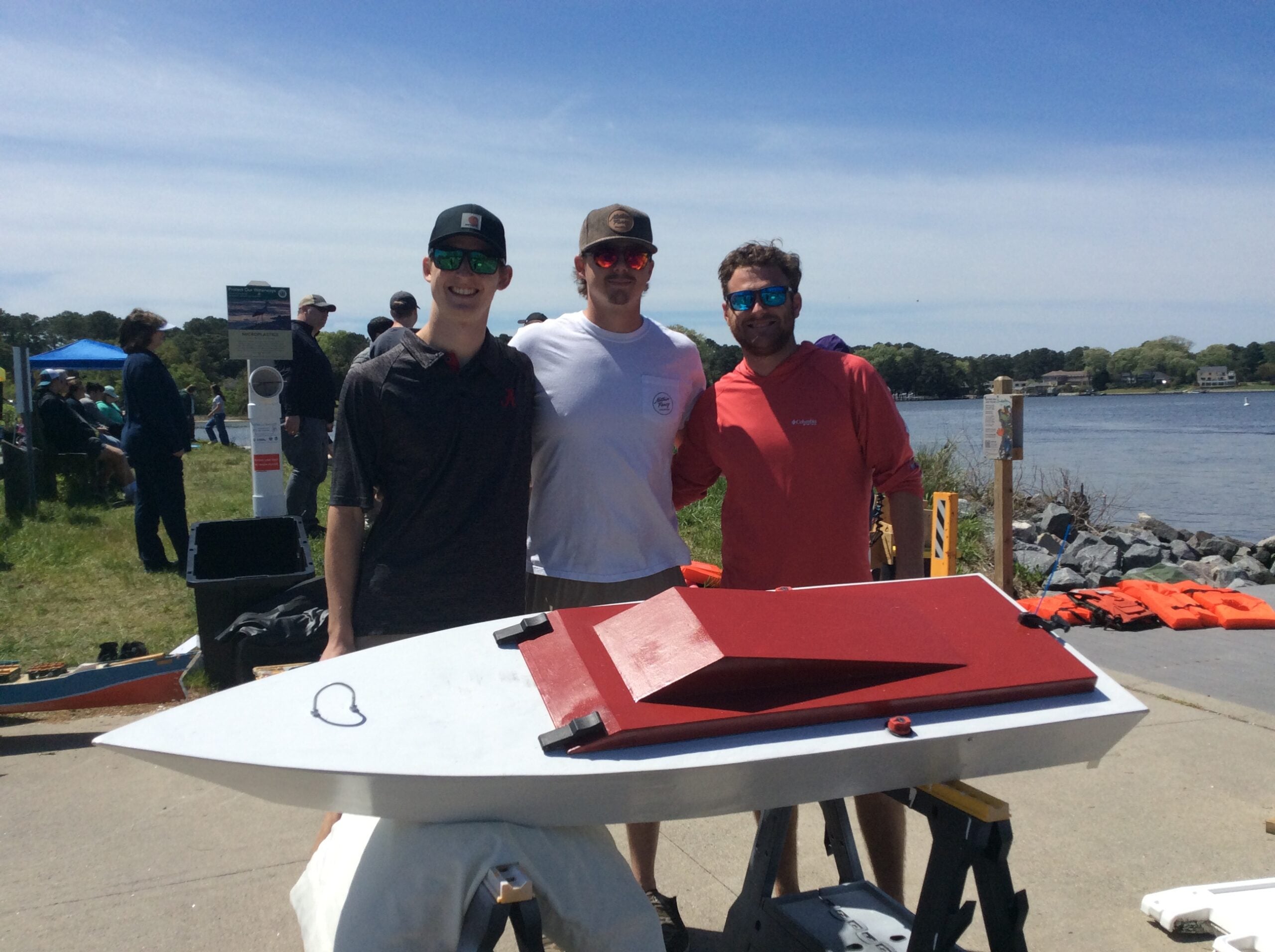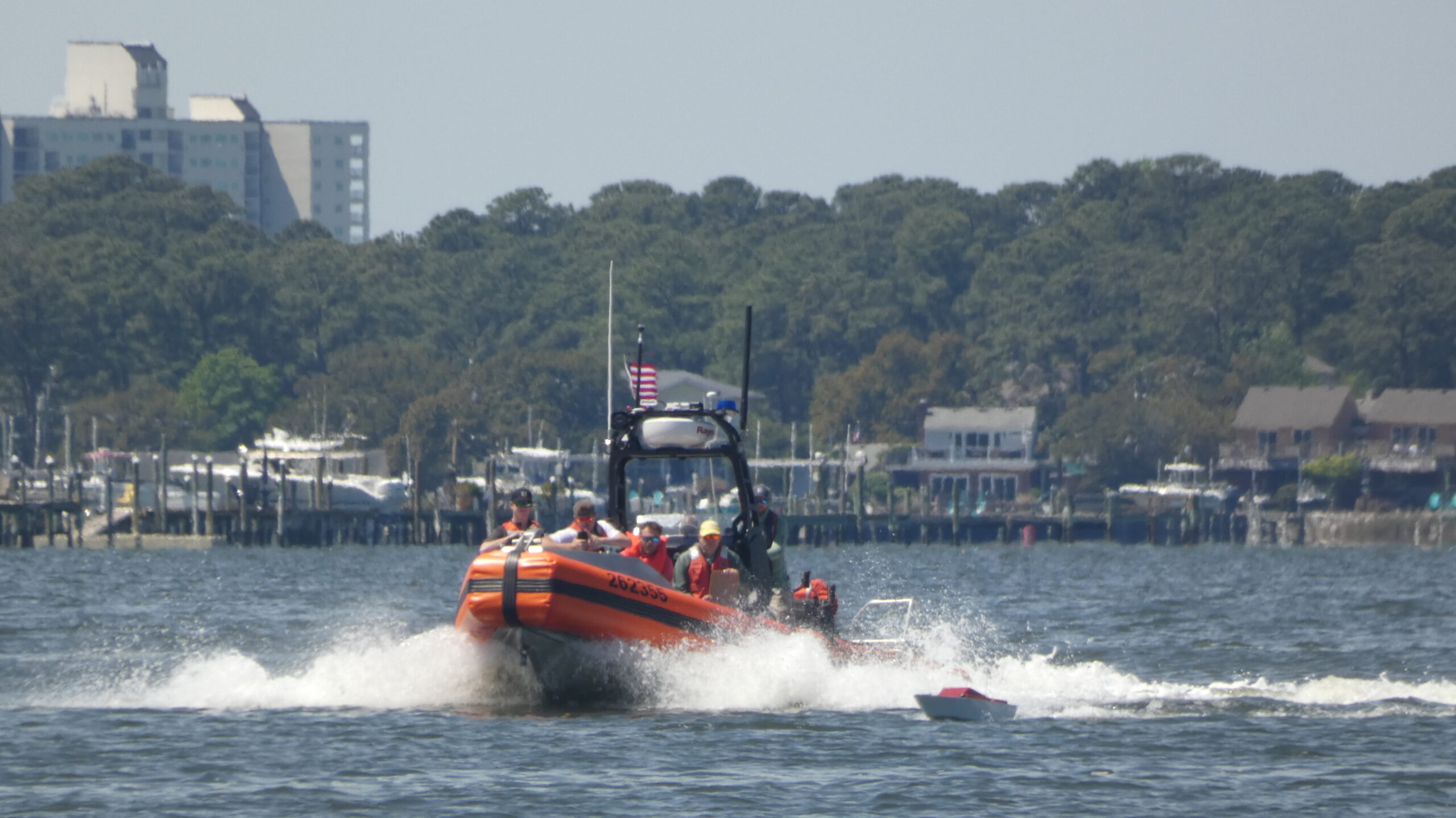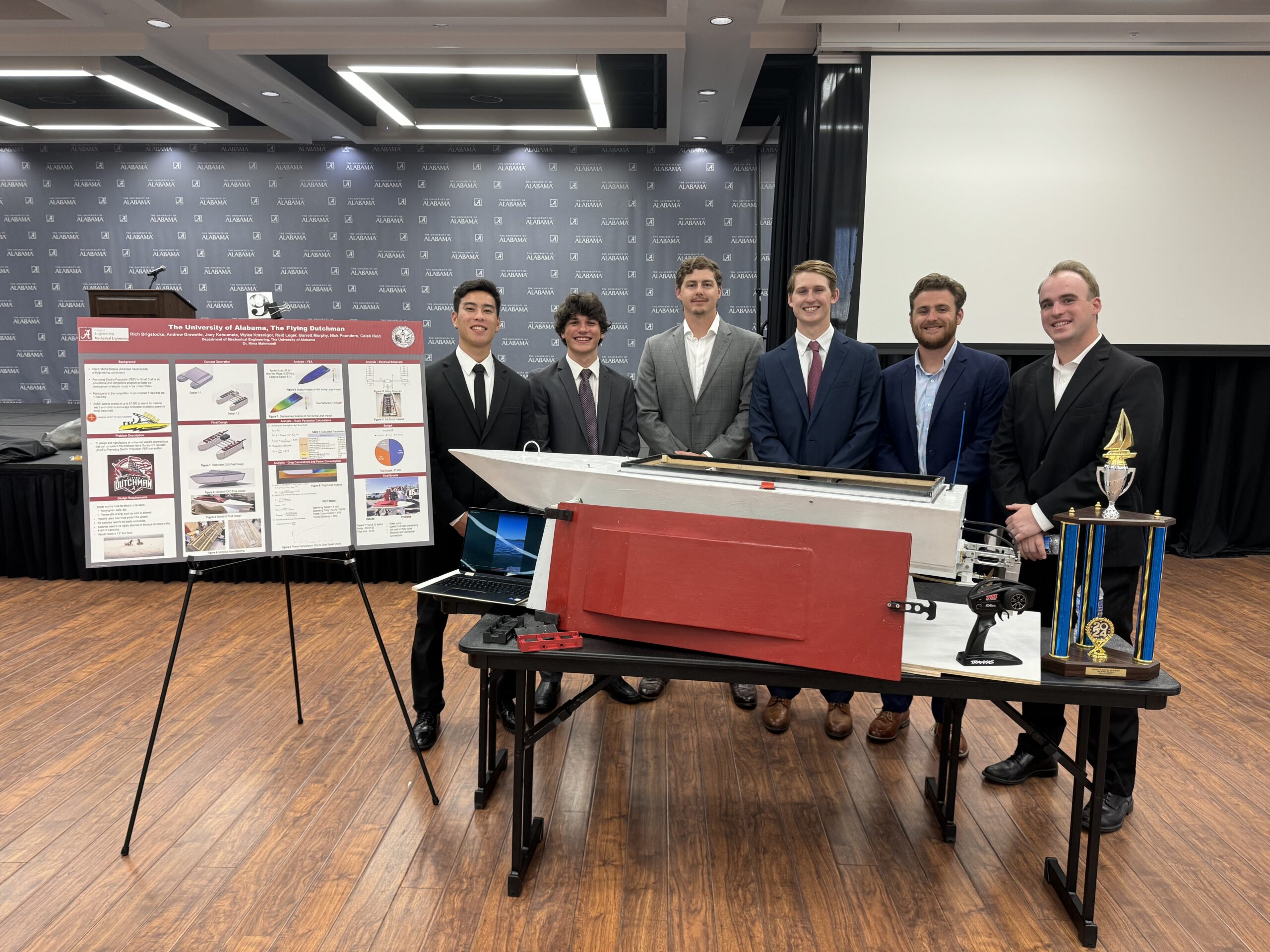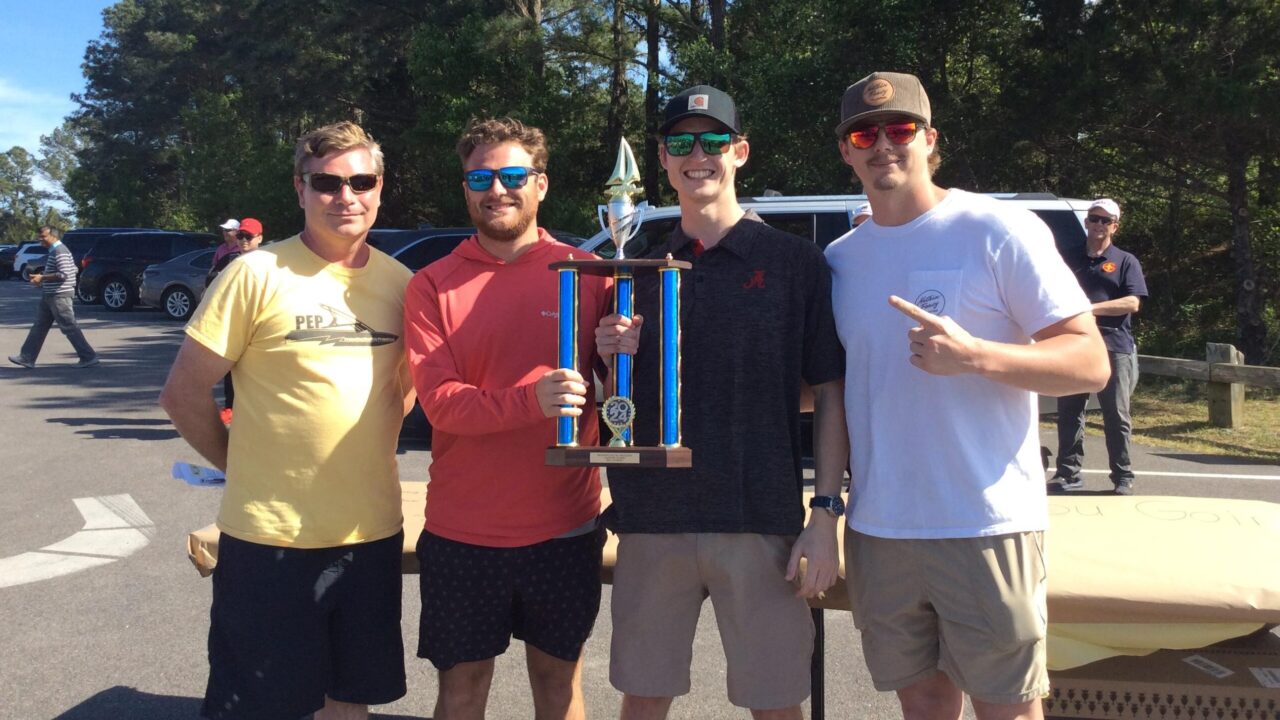After a series of setbacks, a student team from The University of Alabama took top prize in the unmanned division at the Promoting Electric Propulsion 2024 competition in Virginia Beach on April 15-16. Sponsored by the American Society of Naval Engineers, the event brought more than 200 student engineers from 34 universities to compete in time trials with their vessels that must travel five miles on battery power in uncertain conditions.
Reid Leger, Nick Pounders and Richard Brigstocke traveled to the competition with their project, the Flying Dutchman, which was the culmination of their senior design project. Although this was the first University of Alabama team to enter, they beat out teams from elite schools with a long history of competing.

Underdog energy
“We had guys that ranged from construction experience, automotive industry, all the way to true CAD specialists,” said Leger, who served as the team lead. Even more than winning, he said showing off their craft to other student teams was the highlight of the weekend.
With no previous experience in the event and no team members who had built watercraft or electric propulsion systems, the team members started with modest hopes.
“Originally our goal was just to show up with a boat and qualify for the race,” Brigstocke said. “However, as we qualified at each stage of the event, our goal got higher and higher.”

Nick Pounders rounded out the competition team and helped with the design and manufacture of the hull. Despite a job and internship, he was dependable and brought a consistently upbeat mindset to the work, according to teammates.
“I tried to bring a positive environment to the team,” Pounders said. “I wanted to be a great teammate and help everyone enjoy our time even when things got stressful.
Engineering resilience
And things did get stressful. Early design and manufacturing challenges with their original fiberglass hull left the team without a working boat less than two months before the competition. Brigstocke used his spring break to completely redesign the hull and customize it to the conditions the craft would face on race day. Even before their boat hit the water, they were racing against the clock to build, test and troubleshoot the back-up design.
Students in the senior design course chose their project from among several proposed at the beginning of the fall semester said Dr. Nima Mahmoodi, associate professor of mechanical engineering and the team’s senior design faculty advisor. He praised the team’s tenacity and Leger’s leadership.
“The team was determined to finish the boat and attend the competition for the experience,” he said. “From a technical point of view, they made two parallel power train systems that could compensate any problem with the other one. In addition, they considered safety factors to use better motors and cooling system to be prepared for any unexpected force or heat in the system.”
Brigstocke and Pounders also praised Leger’s work as team lead.
“Reid was critical in pulling the team together, ensuring we were on schedule, and making sure we completed all the tangibles required,” Brigstocke said. “He was one of the few who never gave up.”
As the team advanced through the early heats, they began to get excited. Their initial goal of attending with a qualifying boat gave way to a goal of finishing in the top half of entrants, then top five and then a place on the podium.
Doing more with less
“You can’t imagine how excited we were after our run when we realized we were in contention for the podium. And then our absolute delight to find out that we had actually won it,” Brigstocke said.
The team members credit their success in large part to restraint. Thanks to early design failures, they avoided niche mechanics and unnecessarily complicated parts.
“We focused on mechanics that were proven winners and simply created those to the best of our abilities,” Leger said. “Ultimately, focusing on making the most efficient and stamina-based vessel allowed us the best of both worlds and to come out on top.”
Rounding out the full electric propulsion design team were additional project members Andrew Grewette, Joey Katsumata, Wylee Krasnigor, Garrett Murphy and Caleb Reid, who contributed in the design and manufacture stages during the yearlong project. Shown below, the team also won first in the engineering senior design project poster competition.

Contact
Jessica Nelson, Strategic Communications, jessica.nelson@ua.edu
